Many Berries but Just One Little Bird
A Verdin dines on Pistach berries
Fort Lowell Park is a unique local public park in Tucson. Besides the usual ball fields, playgrounds, tennis courts, etc., it also has a small pond and some historical buildings from when the Fort was located at this site, 1873-1891.
Next to the hospital ruins is a Chinese Pistach tree. Years ago the City planted Pistach trees in a number of city parks due to the tree's tolerance for drought, the shade it provides, and, I imagine, for the fall colors when the leaves turn. These trees are related to Pistachio trees although Pistach trees do not produce anything edible for human consumption. You can see the pistach tree to the left of the ruins
Chinese Pistach bears small fruit annually. Wintering birds do eat the fruit. At this time of year, the tree's leaves are gone but some fruit remains. On a recent visit to Fort Lowell Park, I sat down on the base of the park's flagpole in front of the ruins and waited to see if any birds would come to feed on the berries. The flagpole is just out of sight to the right of the above shot. Here are some of the pistach berries.
During the long sit, only one woodpecker came through but a hungry verdin returned to the tree over and over again. Verdins build the many spherical, grapefruit sized nests you may see in trees all around Tucson. There is something special about the nests that Verdins build and Birdnote tells us about those nests: https://www.birdnote.org/podcasts/birdnote-daily/verdins-winter-roosts
Verdins eat insects and spiders, as well as nectar, fruit and plant matter. The Pistach berries seemed to be today's easy meal. With so many berries to choose from, I wonder what the Verdin is looking for to find the perfect berry? They all look good to me.
On another berry bunch, the Verdin has grabbed one of the berries and is holding it up to take a bite. It looks like it is holding a tiny apple.
Verdins have yellow heads and a sometimes visible rusty shoulder patch. The Verdin below looks like it is pausing to think.
It spent quite a while on this particular bunch of berries, finally picking another one. If you look closely, it has taken little bites out of the berry, which now looks like an apple that a toddler has been nibbling on. There are white bites evident but plenty of red skin left.
Thinking again, the Verdin contemplates its next move.
It hops over a few inches to a clear branch and continues consuming its berry.
When Verdins search for insects they often hang upside down on plants. This Verdin is using the same technique to search for just the right berry.
It does seem that there should be easier ways to find an edible berry. Here, the Verdin has turned its head upside down to select the right fruit. Why doesn't it just stand normally- I think it could still reach the same berry if it took that approach. I guess the answer is that Verdins do what Verdins do. There is no other explanation.
This flexible eating style is part of the Verdin's makeup. Many Tucson residents see Verdins trying to steal any bit of hummingbird nectar from the hummingbird feeders in their yards. The Verdins climb all over the feeder. If a flower has a wide-enough opening, the Verdin can get to the nectar in the flower by sticking its head in the flower. However, if the flower is thin and tubular, the Verdin will pierce the base of the flower to "steal" the nectar. This little desert bird will do whatever it takes to eat!



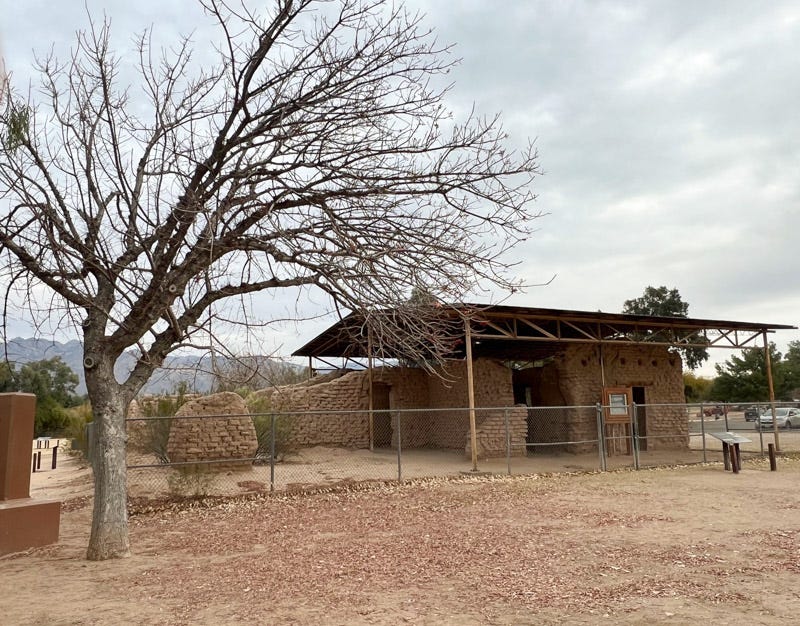


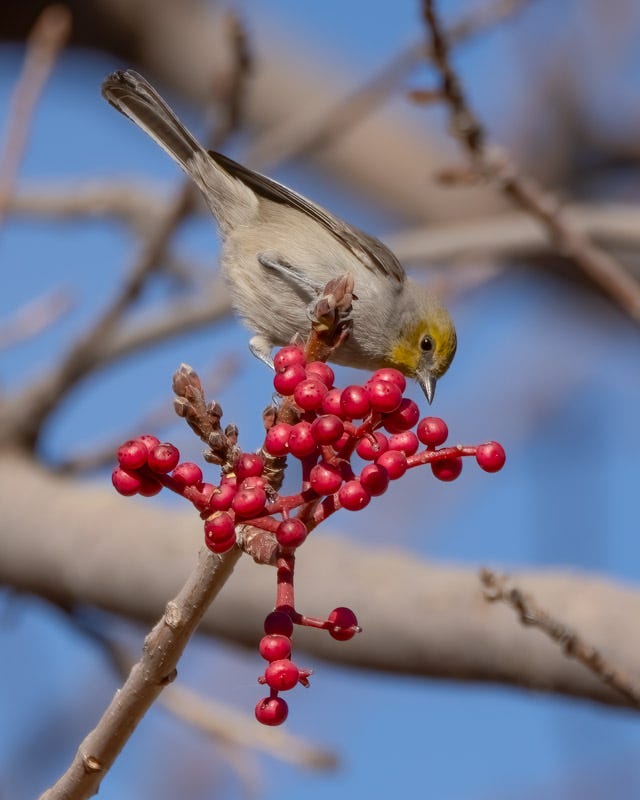
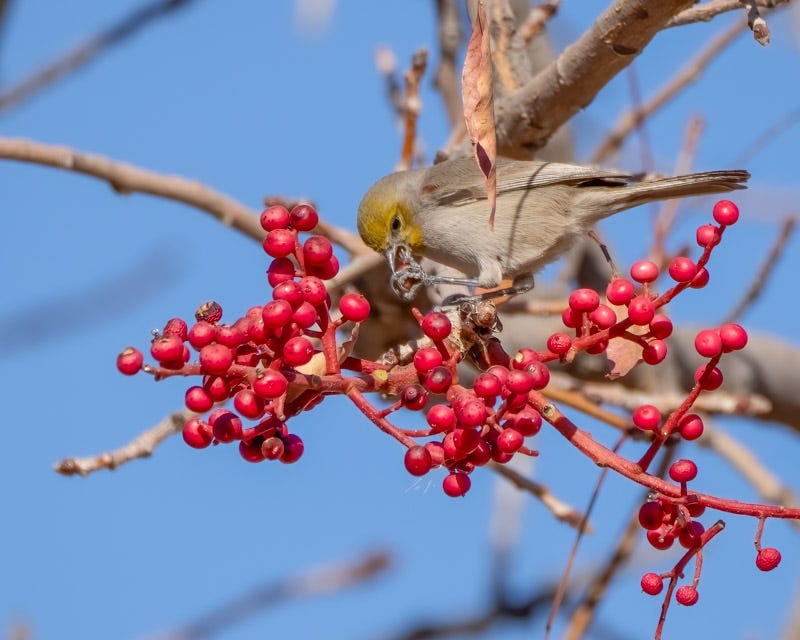


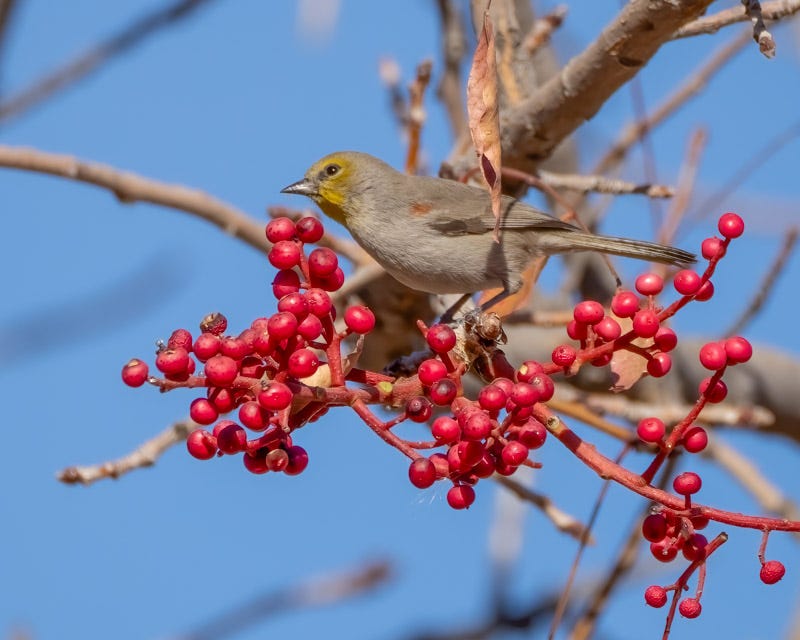
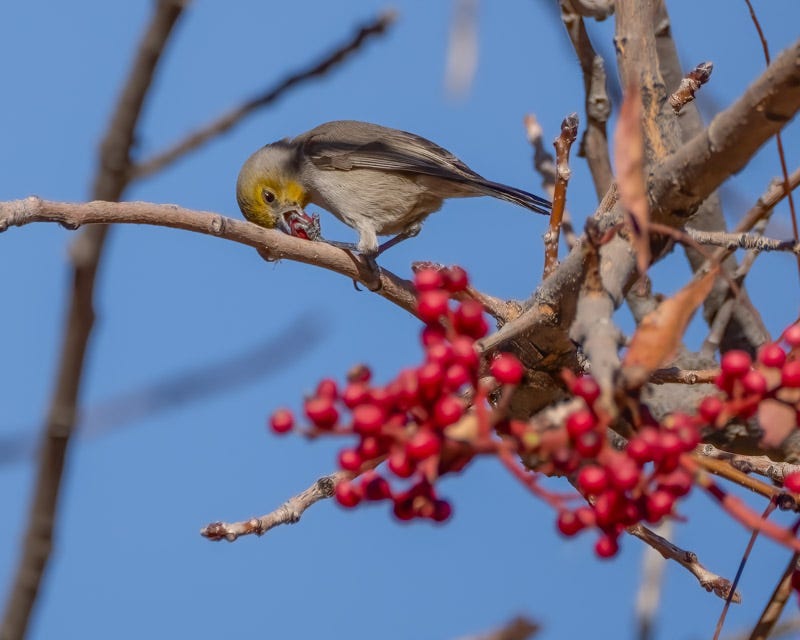
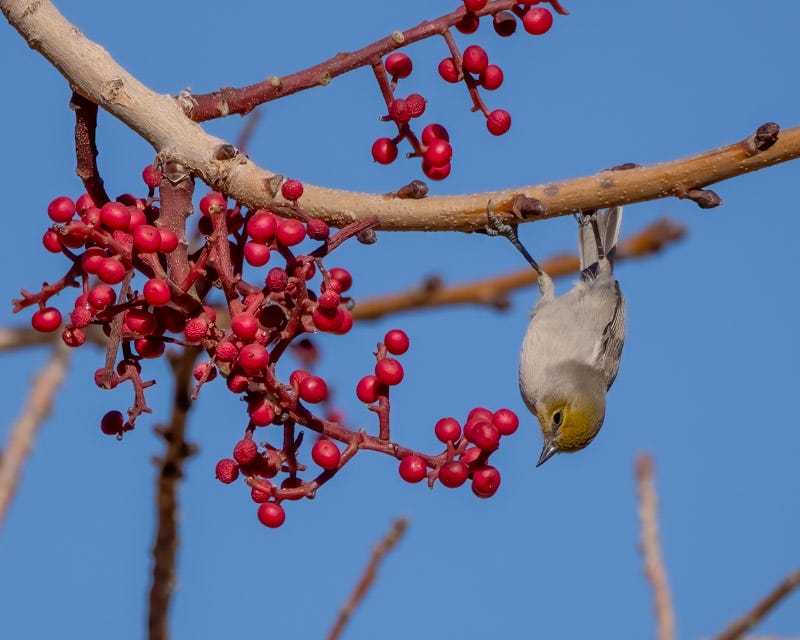

This is a fun post. I like the verdin hanging upside down to get the berries.
Thank you for another informative, entertaining posting – – I have learned so much from you!!